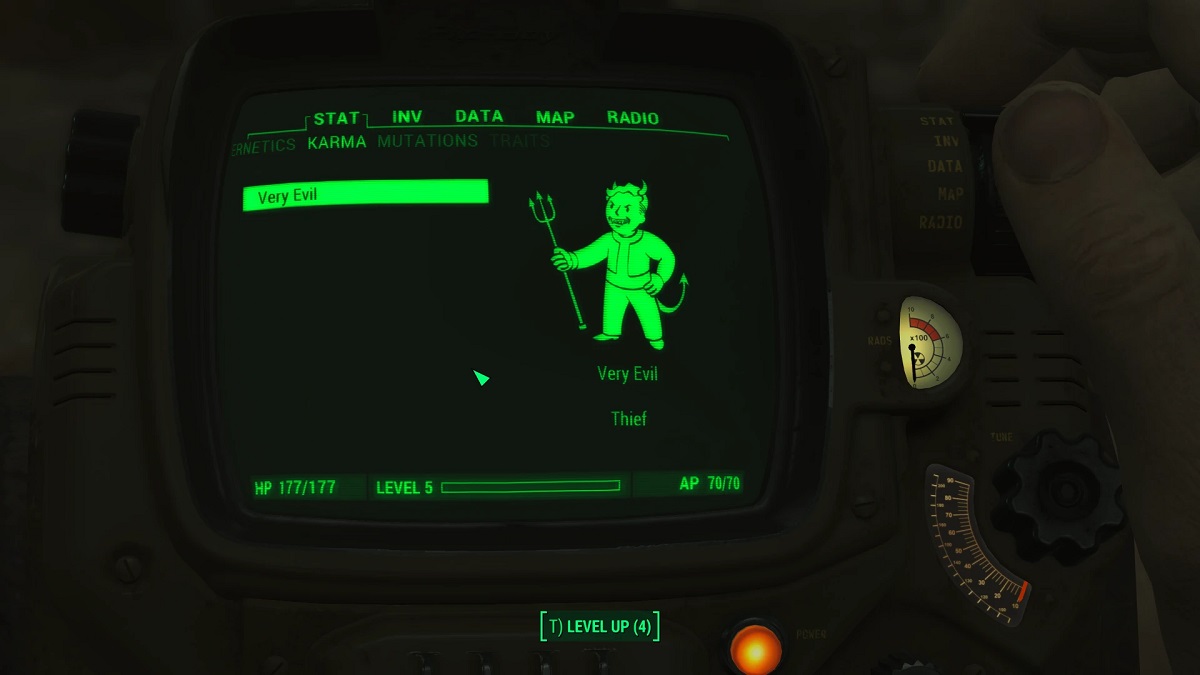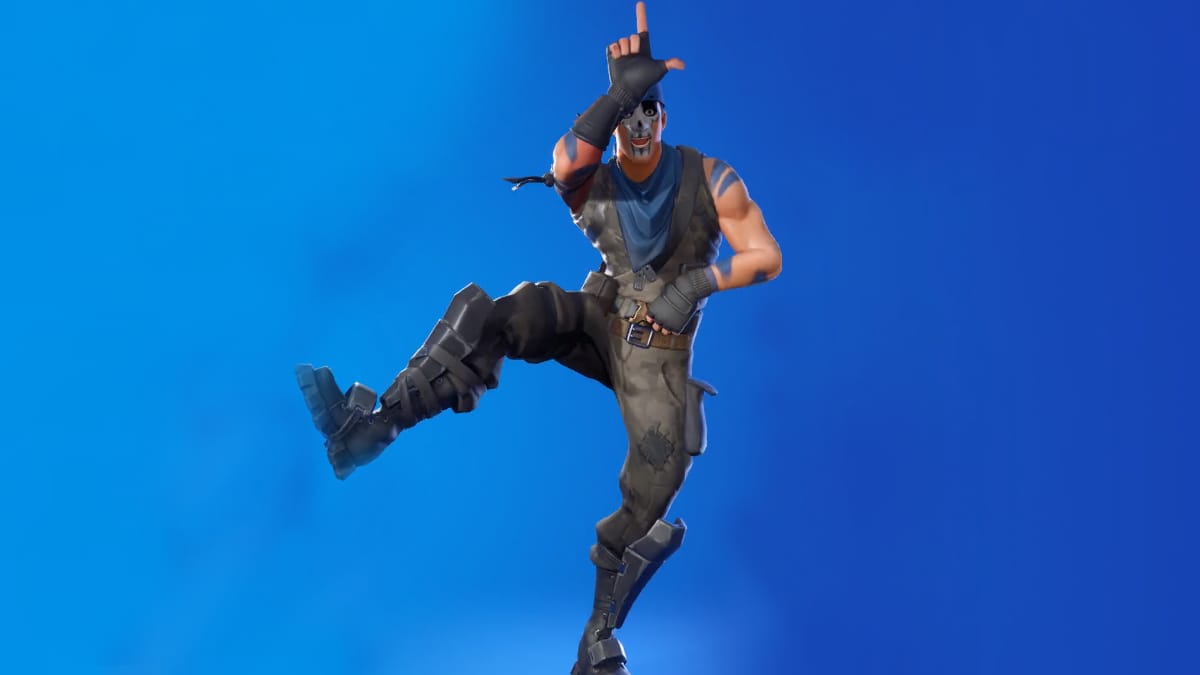
Ken Levine is kind of a badass.
He not only worked as the creative force behind one of the most incredible games of all time*, but the dude knows how to give an interesting presentation. In “Storytelling in BioShock: Empowering Players to Care About Your Stupid Story,” Ken acknowledged many of BioShock‘s flaws, and his own personal behavior as a designer that caused his employees to get really, really pissed at him. This all came in between numerous cultural references and jokes with the F-word in them. Which was pretty awesome.
But when he wasn’t being just plain entertaining, Ken had a lot to share about the importance of how to tell a story in videogaming; from the concept of “storytelling vs narrative” to the dangers of cut scenes and intelligent human characters, Levine tackled BioShock‘s narrative strengths and how designers can and should use gameplay to tell their stories.
Hit the jump for the highlights of Ken’s hourlong lecture.
*If you call it “overrated,” I will personally come to your house and rip your testicles out through your pants
The first thing you notice about Levine’s presentation is how damn blunt he is. His Powerpoint slides have titles like “Nobody cares about your story,” with bullet points reading “details suck.”
While you, as a storyteller, care very deeply about the nuance and specifics of your game’s story, your audience won’t. It’s not that gamers are stupid or have short attention spans so much as the fact that, in general, stories have to earn our interest. They need to personally involve us; the story initially needs to come to us, not we to it.
In games, Levine said that cut scenes are basically just a way to throw this detail and minutiae at your audience, and then simply demand that they care. This is, of course, inefficient. When speaking about his past experiences as a designer, Levine commented that “The best narrator…we had was not a cut scene…it was the world.”
According to Levine, game environments present a fantastic way to subtly communicate information to the player, since (given today’s technology) they can be nearly 100% authentic-looking and therefore contain immeasurable story detail. He lamented games which predominately take place in barren sewers or warehouses as “missed opportunities.”
To illustrate this idea, Levine showed us a very early prototype of BioShock, before the environments included the incredible amount of clues and info that they do in the final version. The player character walked around a completely barren room in Rapture which, while pretty, said essentially nothing about the world or its characters. Levine said it was a very difficult choice to completely ditch this prototype version which his team had worked so hard on (he unironically noted that telling your entire team to restart from scratch and add more context clues is “the easiest way to get [them] to hate you”), but that it was ultimately necessary for the quality of the game.
As time went on, Levine found that he needed to simplify the story. Originally conceptualized as an absurdly epic adventure through three different times periods with multiple protagonists and dozens of NPCs, Irrational eventually decided to streamline the entire plot: in 2006, they combined or killed all the major characters, and those few which remained served to represent exactly one idea.
In BioShock, Diane McClintock tells the player about Rapture’s civil war; Ryan’s head of security symbolizes Ryan’s conscience; the Russian mother who laments the loss of her child to Fontaine’s orphanage shows the player how the war affected the little people. Each character represents only one idea, and Levine suggested that the story was much stronger and easier to follow as a result of it.
He then talked about the idea of “push versus pull” in storytelling. In cut scenes, the storyteller pushes the info at a player. “That’s not our strength,” Levine said. Rather than push stuff at the player, why not allow them to pull that info toward themselves? While many players won’t necessarily go the whole hog and search for every bit of story information, they’ll still have a good time without being bogged down by cut scenes, and the gamers who are desperate for every plot point will find much more personal meaning in information they’ve earned rather than received.
Levine went on to discuss how to rope in those gamers who can best be classified as Madden or Halo players: people who own a console, but aren’t deeply immersed in the culture to the point where they’d care about BioShock or Assassin’s Creed purely thanks to their stories. Levine likened it to walking into a grocery store and seeing a new seasonal type of Oreo on a shelf. Seeing “Spring Oreos,” you’re interested, Levine said, but not necessarily because you’ve been checking the Oreo website and getting into flame wars on the Oreo discussion boards (the crowd shared a big laugh when, typing on an imaginary keyboard, Levine shouted, “Halloween Oreos are better, fuck you!”).
In roping in these quasi-casual gamers, storytellers need to think in three levels of story. The first level, aimed toward the Madden and Halo fans, simply consists of, “what do I need to do?” The second, for gamers slightly more interested in story, is “what is going on/who are these people?” The third and highest story level is for the die-hards who want to completely immerse themselves in the game world and story, who searched for every voice recording in BioShock and loved uncovering its secrets.
For that third level, Levine urged that storytellers need to start using narrative vehicles exclusive to games. He spoke his immense adoration for the Final Fantasy series and its grandiose cut scenes, but he still suggested that games are nonetheless headed twoard “non-traditional narrative space,” and storytellers should be ready to embrace that. In BioShock, the most simple and obvious nontraditional storytelling was embodied in the audio logs, or the aural propaganda being broadcast throughout Rapture.
In pursuing this non-traditional storytelling, Levine warned designers: “don’t do what you can’t do.” In creating games like BioShock and System Shock 2, Levine was sure to place the action in a locale which realistically lent itself to being completely sealed off from the rest of the world. As odd as it sounds to call an underwater supercity like Rapture a “believable” environment, its purpose for the player makes sense; you can’t just up and leave, because you’re totally isolated.
Levine also suggested that current developers “can’t do” legitimate, 100% believable normal human characters. Regardless of how useful they may be, contemporary human NPCs will always break that suspension of disbelief at some point. This is why nearly every sane person you meet in BioShock dies about three seconds after you first lay eyes on them. After his initial talk, I asked him how he felt about the efficiency of Alyx Vance as a virtual human character. While he showed all due deference to Valve’s brilliant storytelling, he stuck to his guns and said that, since the player can break that fourth wall by shooting Alyx to no effect or what have you, virtual human representation still isn’t 100%. To Levine, he wasn’t interested in doing anything if he couldn’t do it with 100% efficiency.
From there, Levine jumped into BioShock‘s story structure and spoke my favorite quote of the entire presentation: “If you want people to follow your plot, it has to be really fucking stupid.” He cited a film like Raiders of the Lost Ark, which has one simple, straightforward imperative for its protagonist: find the Ark.
This is why BioShock falls into such a recognizable three-act format. One: escape Rapture. Two: kill Ryan. Three: kill Fontaine. If you make these story goals simple and accessible and obvious, then they personally become the player’s goals and they become much, much more involved in the game and story than they would be if they weren’t 100% sure of what they’re doing and why.
“BioShock is a detective story,” he then said. As jarring as this was to hear, he’s really telling the truth: Levine asked the audience to consider what happens when you read an Agatha Christie novel. Yeah, you’re getting a linear story, but you’re totally involved and you want to personally figure out the ending before it happens. BioShock is the same way: essentially linear storyline, but the player is constantly meant to be investigating the mysteries of Rapture and, depending on which of the three story levels the gamer applies to, receiving various amounts of satisfaction from discovering clues.
From there, Levine discussed the difference between narrative and story, which essentially amounted to a rewording of the “push/pull” mechanic. Story is what you tell, narrative is what the gamer personally pulls to them. In making narrative efficient, storytellers must have that narrative illustrate the gameplay. Levine cited fans’ reactions to the Little Sisters and Big Daddies, or the plasmids: gamers really respond to and care about these aspects of the story, because they are directly represented in the gameplay. One the one hand, Little Sisters and Big Daddies are emotional plot devices which show the horror of Rapture. On the other hand, you must fight Big Daddies to progress through the plot. Same deal with plasmids.
I found Levine’s subsequent take on the importance of mise en scene particularly interesting. He talked about Steinman, the plastic surgeon and the first true “boss” Splicer you meet in the game. Since the character has to be built up as a terrifying, powerful figure without the use of cut scenes, Irrational used the physical space of Steinman’s clinic to show you the extent of his insanity and power and horror through writings made on the walls and floor in blood, or pictures Steinman scrawled all over the walls, or the dead and mutilated bodies of his former patient. It never occurred to me that, as Levine put it, Steinman is “just a guy with a machine gun;” he’s actually a physically boring, straightforward character, but the mise en scene builds him up and emotionally invests you in him.
If you’ve listened to JJ Abram’s TED talk this year about the importance of mystery in storytelling, then Levine’s next topic of discussion should sound familiar. In order to immerse the player in the story and keep him interested throughout, your story should have what Levine referred to as a “Mystery Balloon.” You keep the balloon filled with questions — what is this place, who are this people — and make sure it stays in the air. If you answer too many questions, the balloon sinks and you’ve got a dull story. If you raise too many (“See: season 3 of LOST,” Levine muttered), the balloon floats out of range and the player loses all grip on it.
Interestingly, Levine says this is why the last act of BioShock is so uninvolving. Despite including what Levine felt was some of the most enjoyable gameplay in the entire package, gamers didn’t respond to it because, after you find out who you are and who Ryan and Atlas are, the mystery balloon plummeted to the ground and players stopped caring about the story. It was pretty damned admirable to hear Levine bag on his own game so bluntly, and it drove his points home even further.
After that, Levine poked a bit of fun at story-heavy games which try to cram “a hundred and fifty proper nouns you’ll never remember” of context and backstory into the prologue. If you try to push a bunch of background info on your player, they’ll either reject it entirely or accept it and be completely bored due to the lack of mystery. This is why BioShock opens with one big, straightforward mystery: the Robinson Crusoe-style shipwreck makes the context for the opening immediately accessible (in an early version, the game opened with the player floating in the water with no plane crash, and testers were understandably puzzled).
In a huge, wonderfully satisfying moment of fan service, Levine then showed us what BioShock‘s prologue could have been, if he’d chosen to take the all-too-common route of explaining everything really quickly in a short span of time. This faux-prologue was narrated by — wait for it — Ben “Yahtzee” Croshaw, who speedtalked his way through the backstory of Rapture. Everyone laughed, but Levine made a valid point: all this information overload simultaneously spoiled the story and made it meaningless. After the video ended, Levine scoffed, “we fired that guy. I dunno what happened to him.”
In describing how to find immediately accessible images to convey ideas to the player, Levine showed us the iterative process of the Little Sister design. First they were sea slugs, then little midgets, then dogs, until they ultimately became the Little Sisters we know, love, and immediately understand the meaning of.
From there, Levine said something which absolutely floored Chad and I. Believe it or not, BioShock‘s story wasn’t completely done until only eight months before it shipped. Levine doesn’t treat story as a set-in-stone thing which the gameplay is simply built around; he views it as another aspect of the overall package, which has bugs and needs tweaking just like any other part of the game would. Of course, this storytelling model costs a lot more and really pissed off his team, but, for the good of the narrative, Levine assured us that storytelling should be completed late in the game. Sticking to this format allowed him to react as a writer to the myriad of things he’d see the development team come up with: he cited the Gatherer’s Garden sales pitch as something he wrote only a day after seeing the final render of the actual machine, and his little bit of scriptwriting added a lot to the overall experience.
In the end, Levine gave us three imperatives: respect your audience, trust mystery, and empower the gamer. From there, he took audience questions. Most all of them were redundant or irrelevant (including mine), but he went on to tell the audience — and I still can’t believe this — that the game’s philosophical musings on objectivism, authority, control and even the major twists came about way into the development process (once the Little Sister design was finalized, Levine evidently had a braingasm and injected tons and tons of thematic meaning into the project).
The gameplay was set up first, and the story then worked around it; this is obviously friggin’ incredible considering how great the story is, and how narratively-driven the game feels. Hell, even the “Would You Kindly” twist only came about when the marketing guys asked Levine who the protagonist was. He essentially said the protagonist was nobody, and that they should just put the Big Daddy on the game box and leave it at that, but they pushed him on the meaninglessness of the protagonist’s identity to the point where he was inspired to create a hero who is not only an empty, meaningless shell for the player, but who actually suffers within the story and speaks volumes about control and authority because he is empty and meaningless.
To hear this dude talk about little gameplay discussions casually turning into these huge, incredibly profound moments of game storytelling was nothing short of insane. After ambushing Levine and taking the above photograph with he and Chad, we all left and collectively agreed that the presentation was really fucking awesome.
Because it was.



